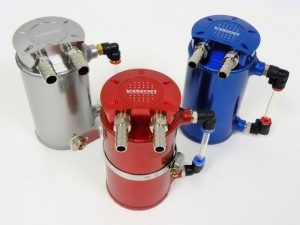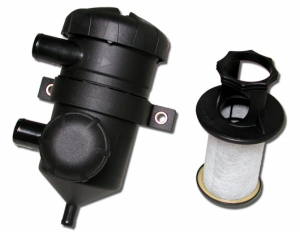Catch Cans add a simple solution to possible damage
I’ve seen these as add on’s for years. After learning a little more I feel I should have been a little more attentive on getting them on my favorite cars as well.
With the popularity of GDI engines these are even more needed. Just as the video below explains why manufacturers don’t add them from the factory, this extra stop in maintaining the life of the engine will pay for it’s self 100X. Manufacturers do have built in systems which do an “OK” job only if OEM guidelines are closely following while driving well below the severe service duty cycle. As we know that never happens. People who love to drive close to the readline or have engines with turbochargers or superchargers need to look into a catch can.
But the main issue today with GDI (Gasoline Direct Injection) is that many have no fuel to clean the outside of the intake valves. In a number of miles just over 100,000 if you had used a high volatile motor oil (any brand other than 100% synthetic AMSOIL – compare data sheets to see the proof) you may have a severely reduced engine efficiency beyond that mileage. You see the deposits left from vaporized oil passing through the PCV system will undoubtedly coat the valves effecting the needed vortex swirl of air from properly entering the combustion chamber. The catch can adds a significant layer of protection in this loop!!
Some common question were answered in a popular forum as well as feedback in Amazon’s comment section which I reposed notes and links below.
“The internal baffle consists of a fine mesh. It should not need cleaning under normal use. Draining however, should depend upon driving habits and engine condition. I service mine every 400 to 500 miles (Drain). Never allow canister to fill completely as this will damage your engine!”
“You are trying to catch the oil that normally comes out of the PCV and/or the valve cover vent before it gets routed into the intake. So route those through the catch can, and the other side to where it went in before. If you have an aftermarket intake on a car with a MAF, you don’t want to route this back into the intake after the MAF as the motor will see it as unmetered air and will run lean.”
Here is a good reference from a recent Road & Track article:
What Is an Oil Catch Can, How Does it Work, And Why Doesn’t Every Car Have One?

Article from Classic Motorsports: A forum discussion called Oil catch cans: Practical or Placebo?
Of course the best thing to do is search your car’s name with “catch can” to see what others are doing about it.


